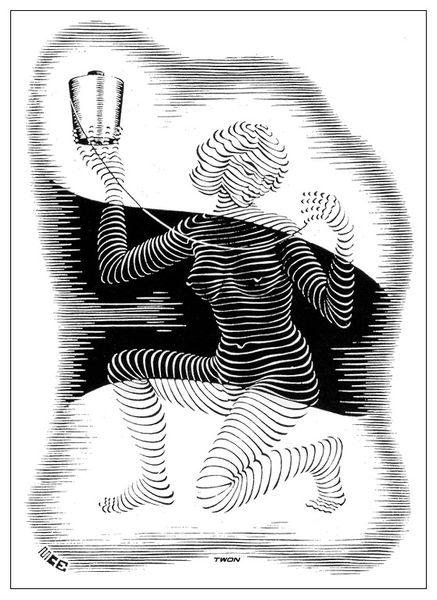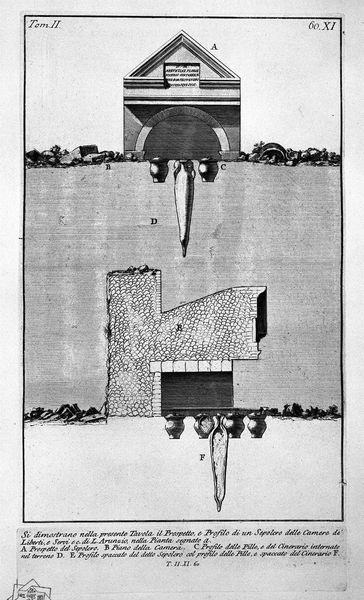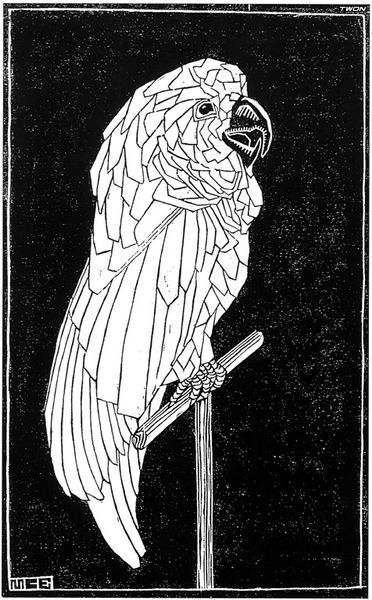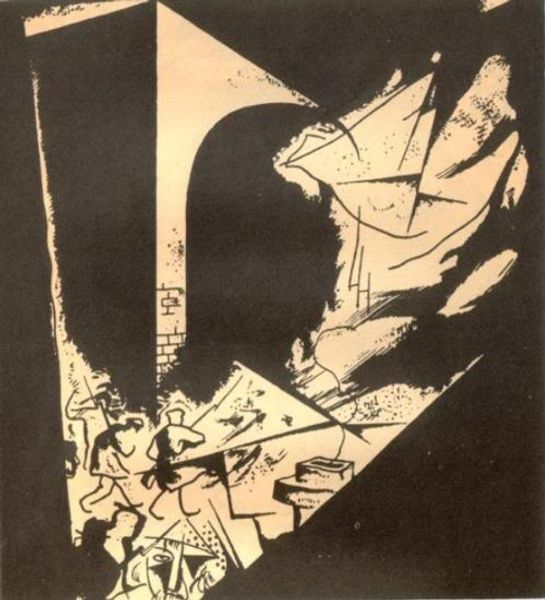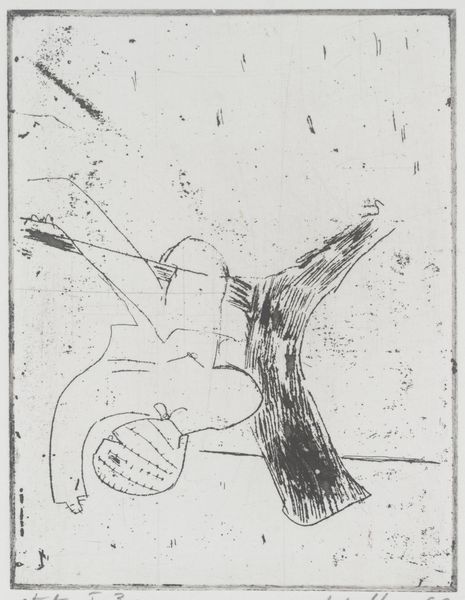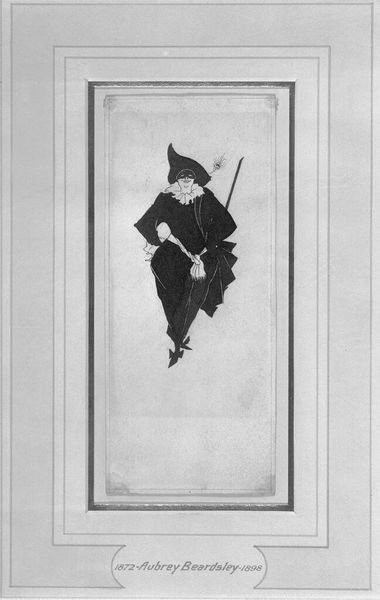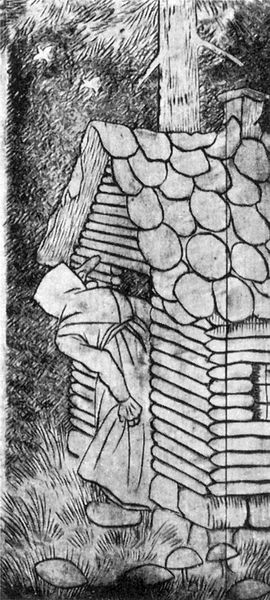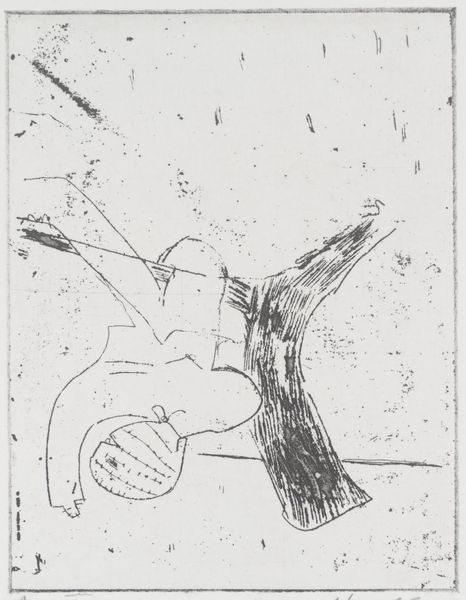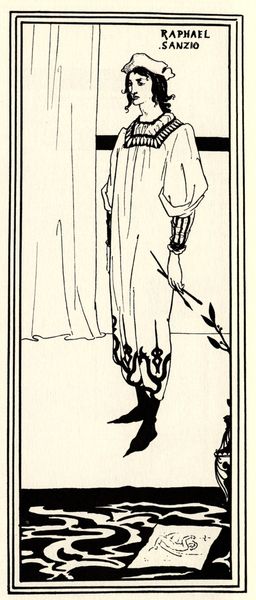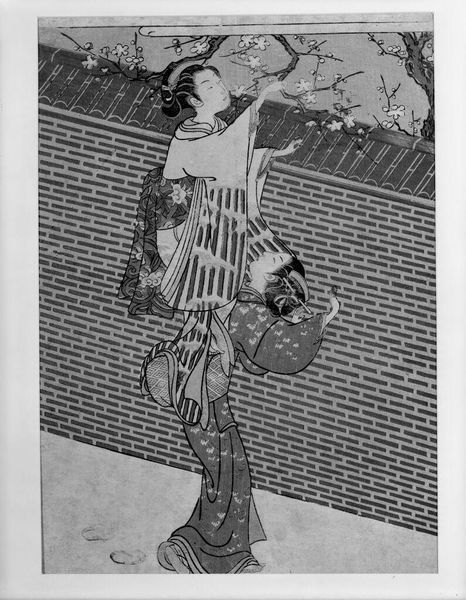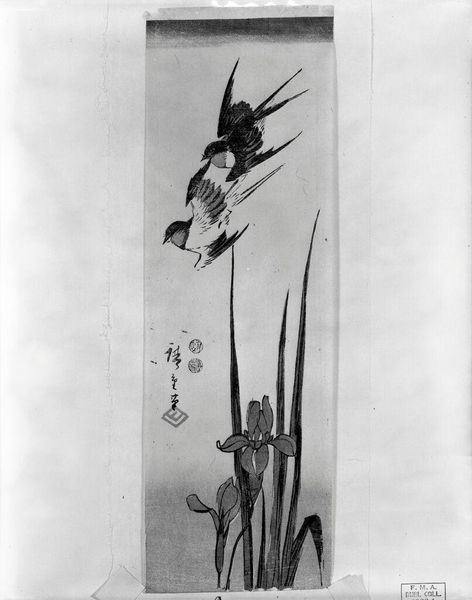
drawing, paper, ink
#
drawing
#
narrative-art
#
landscape
#
fantasy-art
#
paper
#
ink
#
line
#
symbolism
#
cityscape
Copyright: Public domain
Editor: This is Harry Clarke's "The Year's at the Spring," made around 1920, using ink on paper. It feels like a fairytale, a bit dark and whimsical. What do you see in this piece? Curator: I see a powerful commentary on societal constraints. The lone figure soaring above a rigid cityscape, framed by a delicate floral border, speaks volumes. The city itself is rendered with almost oppressive vertical lines, contrasting sharply with the freedom of the individual and the natural, blossoming frame. Do you notice the juxtaposition of nature and industry? Editor: Yes, now that you point it out! It’s like the figure is escaping the city and embracing the spring. Is it meant to be a political statement? Curator: Perhaps. Clarke, working in post-revolutionary Ireland, would have been deeply aware of power dynamics. This could be interpreted as a symbolic flight from societal norms and expectations, a rejection of the industrial, perhaps colonial, order. The fact that they are using a broomstick almost places the work in conversation with representations of powerful, yet demonized, figures in the history of art. Do you see connections there? Editor: That’s fascinating. I never would have thought of it that way. I just thought it was a fun image. Curator: It's both! Clarke cleverly uses appealing imagery to convey deeper, perhaps subversive, meanings. The piece asks us to consider who gets to define "normal" and who is free to transcend those boundaries. Editor: It’s amazing how much context can change your understanding of a work of art. Curator: Exactly. Art is always in dialogue with the world around it, reflecting and challenging the status quo.
Comments
No comments
Be the first to comment and join the conversation on the ultimate creative platform.
